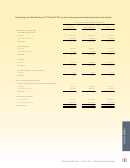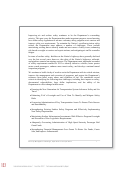Performance And Accountability Report - Fiscal Year 2013 - Federal Aviation Administration - U.s. Department Of Transportation Page 31
ADVERTISEMENT
 1
1  2
2  3
3  4
4  5
5  6
6  7
7  8
8  9
9  10
10  11
11  12
12  13
13  14
14  15
15  16
16  17
17  18
18  19
19  20
20  21
21  22
22  23
23  24
24  25
25  26
26  27
27  28
28  29
29  30
30  31
31  32
32  33
33  34
34  35
35  36
36  37
37  38
38  39
39  40
40  41
41  42
42  43
43  44
44  45
45  46
46  47
47  48
48  49
49  50
50  51
51  52
52  53
53  54
54  55
55  56
56  57
57  58
58  59
59  60
60  61
61  62
62  63
63  64
64  65
65  66
66  67
67  68
68  69
69  70
70  71
71  72
72  73
73  74
74  75
75  76
76  77
77  78
78  79
79  80
80  81
81  82
82  83
83  84
84  85
85  86
86  87
87  88
88  89
89  90
90  91
91  92
92  93
93  94
94  95
95  96
96  97
97  98
98  99
99  100
100  101
101  102
102  103
103  104
104  105
105  106
106  107
107  108
108  109
109  110
110  111
111  112
112  113
113  114
114  115
115  116
116  117
117  118
118  119
119  120
120  121
121  122
122  123
123  124
124  125
125  126
126  127
127  128
128  129
129  130
130  131
131  132
132  133
133  134
134  135
135  136
136  137
137  138
138  139
139  140
140  141
141  142
142  143
143  144
144  145
145  146
146  147
147  148
148  149
149  150
150 ALIGNMENT OF FAA COSTS AND GOALS
We use our Cost Accounting System to track and summarize our
Workplace of Choice.
Approximately $585 million supported
costs in a matrix format by organizational unit and project. This
our workplace of choice goal, to which nearly all the lines of
enables the FAA to monitor that our spending is in alignment
business and staff offices contributed.
with our strategic goals. At the beginning of each project, we
Delivering Aviation Access Through Innovation.
determine the degree to which the project will contribute to one or
Approximately $5.7 billion—or about 35 percent of total net
more of our strategic goal areas: Next Level of Safety, Workplace
costs—was assigned to support our goal of expanding the
of Choice, Delivering Aviation Access through Innovation,
capacity of the national airspace system, particularly through the
Sustaining our Future, and Improved Global Performance through
pursuit of programs contributing to the NextGen initiative.
Collaboration. We allocate actual project costs to the strategic
goal areas supported by the project. Because we also routinely
The ATO spent approximately $4.1 billion, largely to finance
¢
accumulate costs by organizational unit, we are then able to
its facilities and equipment projects.
assign total net costs among our four lines of business and our
The ARP spent over $1.7 billion to enhance the capacity of
¢
combined staff offices, by strategic goal area.
the country’s airports through runway projects and other
efforts.
The FAA total net cost of $16.2 billion was allocated to our
strategic goal areas as described below and as shown in Note 11
The AST contributed nearly $5 million to improve commercial
¢
of the financial statements on page 102.
space launch capabilities through its spaceport grant
program.
Next Level of Safety.
More than $9.9 billion, or approximately
60 percent, of our total net cost was devoted to our primary goal
Sustaining Our Future.
As a whole, we committed
of ensuring the safety of the national airspace system.
approximately $66.7 million to support environmental
sustainability. This funding included support for research
The Office of Airports (ARP) directed $1.9 billion to establish
¢
programs in alternative fuels and increases in aircraft energy
safe airport infrastructure.
efficiency. AIP grants were also targeted toward reducing
The Air Traffic Organization (ATO) spent approximately $6.3
¢
aviation noise near large airports.
billion, largely to maintain the safe separation of aircraft in
the air and on the ground.
Improved Global Performance Through Collaboration.
The Aviation Safety Organization (AVS) spent just under $1.4
As a whole, we committed approximately $3.5 million to
¢
billion on its programs to regulate and certify aircraft, pilots,
strengthening our international leadership role. These efforts
and airlines, directly supporting the safety of commercial and
included programs aimed at reducing fatal accidents around
general aviation.
the world. Funding for training and technical assistance helped
promote safety standards as well.
The Office of Commercial Space Transportation (AST), the other
¢
FAA staff offices, and other programs spent slightly less than
$14 million to further support the agency’s safety mission.
Passenger jets at the international terminal of the Miami International Airport. Photo: .
29
|
|
Federal Aviation Administration
Fiscal Year 2013
Performance and Accountability Report
ADVERTISEMENT
0 votes
Related Articles
Related forms
Related Categories
Parent category: Business









